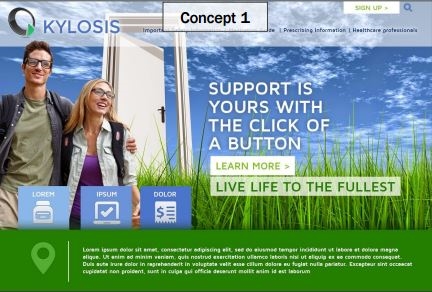About 25% of patients do not feel connected to the companies that make the medications they depend on for one key reason: They do not see themselves in the marketing with which brands expect to reach them.
Patient advocacy network Wego Health Solutions polled 31 patient advocates in March using Truvio, its mobile technology platform, and found the lack of connection between drugmakers and patients “a wake-up call,” Todd Kolm, Wego’s SVP of strategy and insight, told MM&M.
The group presented the data in a panel discussion on Wednesday called “The Patient-Centricity Gap” at the annual DTC National Conference in Washington, DC.
Wego, which cultivates a network of patient influencers on behalf of pharma firms, said companies can solve this sense of disconnection if they use patient advisory panels, which are comprised of influencers who provide insights not just when a product launches but also for the duration of a product’s lifecycle.
If a brand is serious about connecting with its patients, it needs to involve them as stakeholders and use that insight to evolve with them. “This is certainly not a one-and-done endeavor,” Kolm said.
This may seem like input that focus groups could provide, but Kolm said focus groups and patient advisory boards have distinct functions. He explained that patient advisory boards are “a longer-term relationship” that involves working with the same set of patients up to eight times a year to get a sense of barriers or questions patients are dealing with before creative briefs outlining a project’s goal and media channels circulate within advertising agencies.
He said this insider perspective can give brands a more confident way to market their products because patient insight will shape materials that focus groups will vet for resonance. Regular contact with patients can help brands evolve along with their patients, a critical consideration particularly for companies that make aging medications that may want to keep newer drugs from grabbing market share.
Talking to influencers, who Kolm said each speak for about 15,000 patients or their caregivers across a variety of conditions, can give brands a clear idea of a patient’s needs.
It also gives patient advocates a stake in the brand if they see their opinions are valued. Kolm declined to name a specific client but said a patient advisory panel helped a company in the gastrointestinal space uncover an unmet or unaddressed need in the patient community and applied it to a variety of materials, including an app the company wanted to launch. He said “patient leaders were really blown away” when they saw the app because it showed the company had listened to the patients.
The payoff for this sort of input is that it goes beyond establishing the look and tone a brand will use throughout all of its touch points. It will also shape interactions like the ones between nurses and sales reps and can encourage companies to reach out to patients through efforts like supporting established patient communities and ensuring that online outreach serves to create an empathic connection as opposed to talking about a product.
Survey participants also offered some relatively straightforward solutions for how brands can resonate with patients and their caregivers, such as by using real patients and their stories as opposed to featuring “healthy-looking actors or models who do not look like they actually use the product.”








